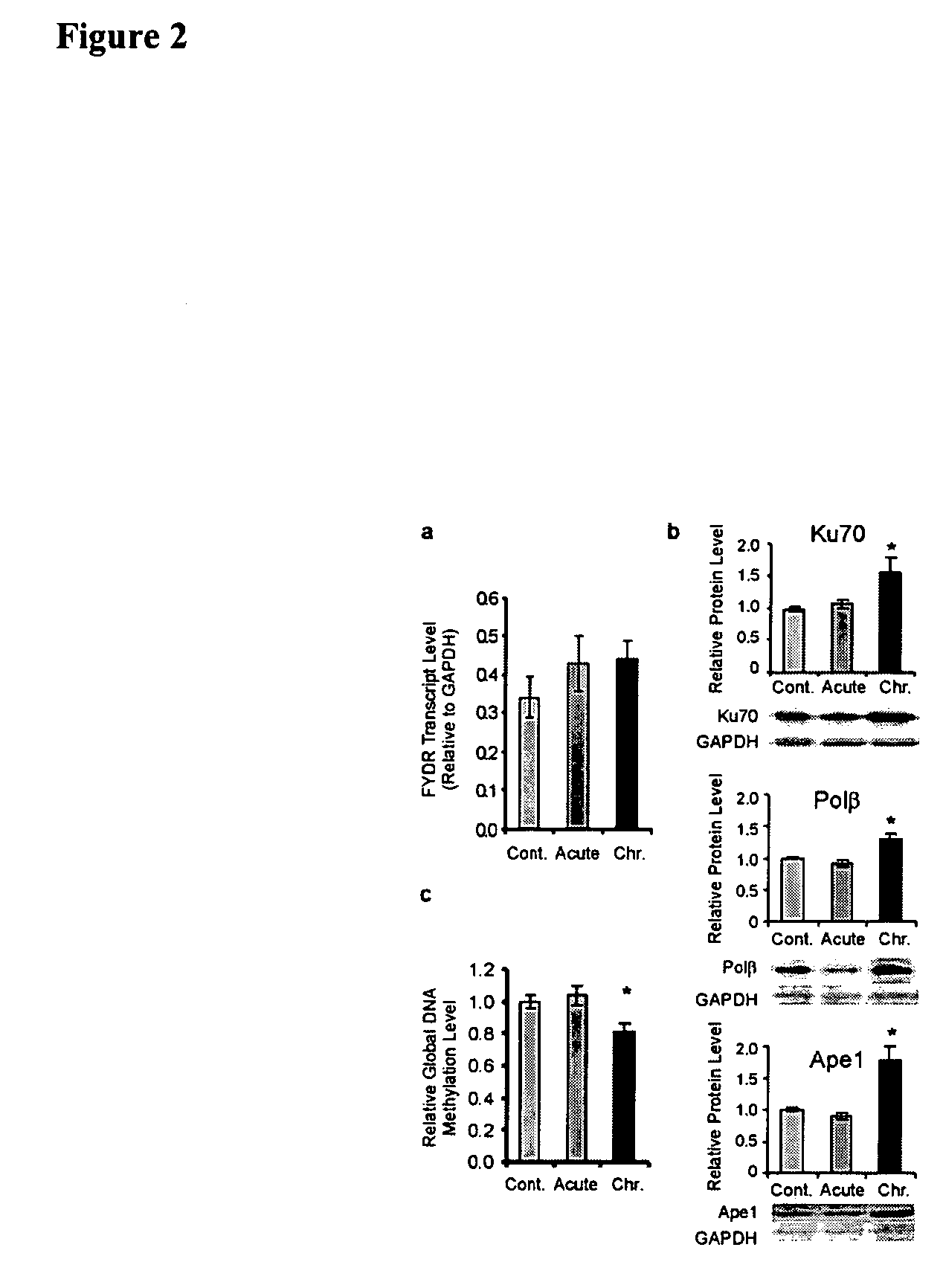Radiation-induced cellular adaptive response
a cellular adaptive response and radiation-induced technology, applied in radiation therapy, x-ray/gamma-ray/particle-irradiation therapy, therapy, etc., can solve the problems of inability to treat tumors located in inaccessible areas, inability to treat disseminated neoplastic conditions such as leukemia, and individual patients often endure adverse side effects. patients may also become resistant to repeated treatment approaches
- Summary
- Abstract
- Description
- Claims
- Application Information
AI Technical Summary
Benefits of technology
Problems solved by technology
Method used
Image
Examples
example 1
[0113] Ionizing radiation induces mutations and chromosomal rearrangements that can lead to cancer (Ron, E. (1998) Radiat. Res. 150:S30-S41). DNA rearrangements are caused by incorrect joining of double strand breaks (DSBs) by non-homologous end-joining (NHEJ), and by DSB-induced homologous recombination (Liang et al., (1998) Proc. Natl. Acad. Sci. USA, 95:5172-5177; Rothkamm et al. (2001) Cancer Res, 61:3886-3893; Jackson (2002) Carcinogenesis, 23:687-696). We recently created transgenic FYDR mice in which homologous recombination between two different truncated eyfp cDNAs can reconstitute full length coding sequence and cause cells to fluoresce in vivo (FIG. 1a) (Hendricks et al. (2003) Proc. Natl. Acad. Sci. USA, 100:6325-6330). Using flow cytometry, the recombinant cell frequency was measured in disaggregated cutaneous cells from 23 unexposed FYDR mice (FIG. 1b-c). As expected, the frequency of recombinant cells varied among individual mice (Hendricks et al. (2003) Proc. Natl. A...
example 2
[0132] We have created several fluorescence-based recombination assays. By site-specifically integrating a matched pair of recombination substrates, we can delineate the full spectrum of classes of recombination. Using this approach, it is possible differentiate between single strand annealing and other classes of non-conservative recombination events (such as unequal sister chromatid exchanges). We have shown that single strand annealing is a common spontaneous recombination event in mammalian cells.
[0133] In addition, we created an animal model that makes it possible to directly detect recombinant cells in multiple mouse tissues by a fluorescent signal. We developed rigorous quantitative assays to measure the rate of recombination in cultured cells and in animals. We have used the engineered mice to reveal unexpected effects of chronic damage exposure, and have shown that recombinant cells can be observed within intact pancreatic tissue. We have also found that recombinant cells ...
PUM
 Login to View More
Login to View More Abstract
Description
Claims
Application Information
 Login to View More
Login to View More - R&D
- Intellectual Property
- Life Sciences
- Materials
- Tech Scout
- Unparalleled Data Quality
- Higher Quality Content
- 60% Fewer Hallucinations
Browse by: Latest US Patents, China's latest patents, Technical Efficacy Thesaurus, Application Domain, Technology Topic, Popular Technical Reports.
© 2025 PatSnap. All rights reserved.Legal|Privacy policy|Modern Slavery Act Transparency Statement|Sitemap|About US| Contact US: help@patsnap.com



